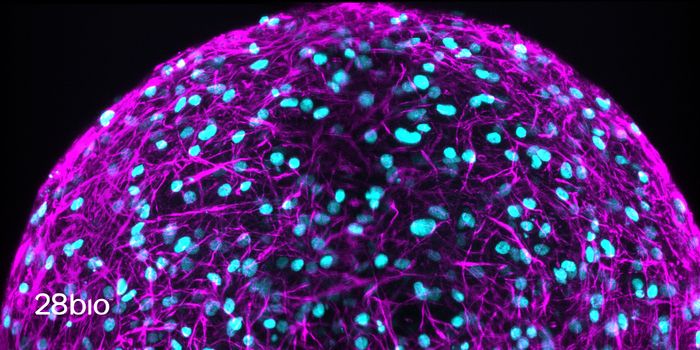Huntington's Research Offers Hope To Patients
Huntington's disease (HD) is a devastating neurobiological illness that happens at the molecular level in the brain. The protein huntingtin can mutate, and when that happens, it doesn't fold correctly.
While it might not seem like a big deal, it sets off a cascade of events and results in brain dysfunction that leads to a loss of cognition, a loss of motor function in large muscles, and eventually death. Researchers at the University of Wyoming have found new information that could be the way forward in finding out what causes these proteins to misfold.
Using a mouse model, the team looked at material that accumulates in the mitochondria of cells and found that in the mice who had been genetically altered to have HD, there was an excess of iron that could be part of the mechanism of the disease. When the protein huntingtin folds incorrectly, clusters form in the brain. Microscopically it looks like a sticky ball of wax with nerves and other tangles of tissue, and the result is that the brain cannot communicate with the body adequately.
Neutralizing the effect of the excess iron in the cells was the first goal of the study. Finding a drug that could penetrate the cell membrane and either eliminate the toxic metal or bind to it to keep it from impacting the cells.
The mitochondria of the cells are where much of the energy the brain needs is produced. It's believed that the excess iron in the cells interferes with cell respiration. If oxygen is not available, cells will die, and this will hasten the progression of HD.
Merely removing the iron isn't the answer, however. Some cells in the body need a certain amount of iron to function, but when it becomes too much, the entire cellular process is disrupted. It's thought that excess iron in mitochondria is also a factor in other neurological diseases like ALS, Parkinson's and Alzheimer's, all of which are related to clumps of misfolded proteins going awry in some way.
UW professor Jonathan Fox runs the lab at the University that is working on Huntington's. In a statement, he explained, "In HD, we think that normal iron metabolism is disrupted, and these adverse effects of iron are allowed to continue. There are many other pathways that have been shown to be important. We're saying this is an important part of the picture."
While mouse model studies are typically used because the mouse brain is similar to a human brain, the study in Wyoming also had samples of human brain tissue from an NIH supported brain bank. Having these human samples be a part of the study was important because in diseases like HD and Alzheimer's it's often been the case that what works in a mouse model does not always translate to success in human trials. Fox added, "Mouse HD models are great for studying the human disease but are not perfect. Whenever possible, we try to verify the findings in animal models are actually present in the human condition. We were fortunate enough to obtain human brain tissue and show similar changes to the HD mice in the current study."
The team plans to expand the work into other similar diseases that could have some common features with Huntington's. The video below features the Fox lab team members, check it out.
Sources: University of Wyoming, Free Radical Biology and Medicine, Huntington’s Disease News









